What is AORTIC ANEURYSM?
An aneurysm is a bulge (saccular dilatation) in a blood vessel, similar to the bulge one may see on an over-inflated inner tube. Aneurysms can affect small and large blood vessels of the body.
An aneurysm occurs when the pressure of blood passing through part of a weakened blood vessel causes the vessel to bulge outward.
Aneurysms are dangerous, but not always life-threatening. When the bulging stretches the artery too far, it may burst and a person may bleed to death. Aneurysms that bleed in the brain are called strokes.
In the cardiovascular system, the aorta is the main artery leading away from the heart. Aneurysms sometimes develop in the aorta. Most commonly, aneurysms of the aorta occur in the abdomen below the kidneys (abdominal aneurysm). It may also occur in the chest cavity, forming a thoracic aneurysm.
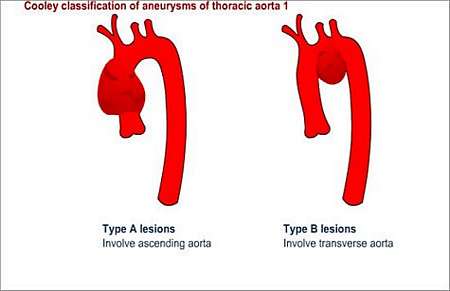
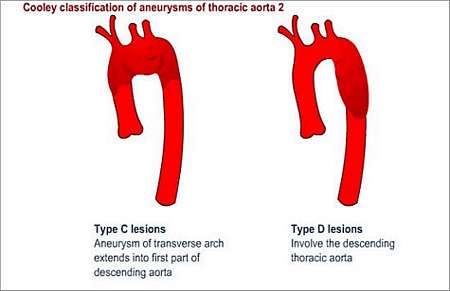
Why does this happen and how may it affect the patients health?
Aneurysms occur in areas of blood vessels where the walls are weakened.
There are several conditions that may cause an artery wall to weaken. In the aorta it may occur as a result of the build up of fatty deposits, called plaques. In another instance, the artery walls can be weakened because of an inherited disease, such as Marfan syndrome, due to defective connective tissue in the artery walls, causing weakness.
The following conditions increase the risk for developing aneurysms
- High blood pressure
- Smoking
- Atherosclerosis (build up of fatty plaques in the arteries)
- Inherited causes
- Infections of blood vessels (syphilis)
- Injuries
- Inherited causes
- Deep penetrating wounds
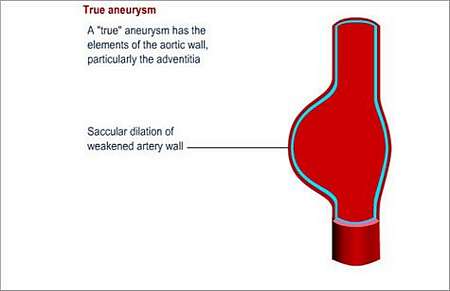
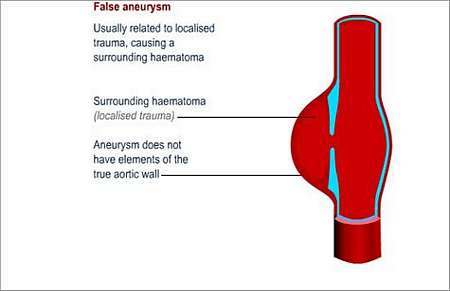
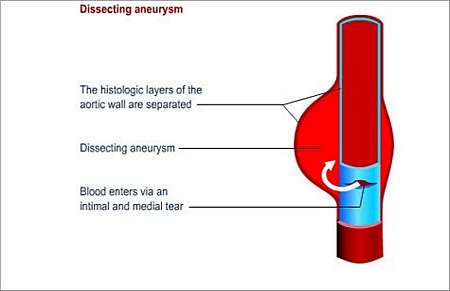
What symptoms may the patient experience?
The symptoms depend on the location and type of aneurysm. Aneurysms may cause pressure symptoms on nearby organs, blood vessels, nerves and other blood vessels.
Aortic aneurysms may for example cause the following symptoms, due to pressure effects
- A croaky voice
- Backache
- Shortness of breath
- Pain between the shoulder blades
- Pain in the left shoulder
- Sudden, severe pain in the chest or abdomen due to dissection of tissue layers in the aortic wall (it may resemble a tearing or ripping feeling)
How is the diagnosis made and what special investigations are required?
- Physical examination
- Cardiac ultrasound (sonar)
- Chest or stomach X-ray
- Echocardiography
- MRI (magnetic resonance imaging)
- CT (computed tomography) scanning
- Arteriography
What is the treatment?
Aneurysms are treated surgically. A patch or artificial piece of blood vessel is sewn where the aneurysm was.
Treatment depends on the size and location of the aneurysm and the patients overall health. Surgical intervention will be determined and justified by the diameter size of the aneurysm.
Some aneurysms may require immediate surgery e.g. chest aneurysms. On the other hand, aortic aneurysms that occur in the abdominal aorta may be observed, before operating.
Aortic chest aneurysms are treated by means of replacing or relining the weakened section of the vessel with an artificial graft (tube).
Abdominal aortic aneurysms that are smaller and more stable may be followed up by regular check-ups by the doctor. The growth of the aneurysm can be monitored. Aneurysms of the abdominal aorta that grow bigger than 5 centimetres in diameter, tend to continue to grow and usually cause symptoms.
In certain cases, medicine may be prescribed, such as a Beta-blocker, which causes lowering of blood pressure, reducing the stress on the blood vessel walls. This is mostly used in patients where the risk of surgery is greater than the risk of the aneurysm bursting.
A stent graft acts as a barrier between the blood and the wall of the artery. The blood flows through the stent graft, decreasing the pressure and preventing the aneurysm from bursting.
© 2003 Prometheus™ Healthcare (Pty) Ltd
|